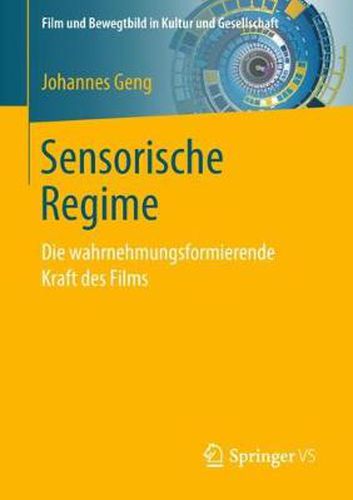Readings Newsletter
Become a Readings Member to make your shopping experience even easier.
Sign in or sign up for free!
You’re not far away from qualifying for FREE standard shipping within Australia
You’ve qualified for FREE standard shipping within Australia
The cart is loading…






This title is printed to order. This book may have been self-published. If so, we cannot guarantee the quality of the content. In the main most books will have gone through the editing process however some may not. We therefore suggest that you be aware of this before ordering this book. If in doubt check either the author or publisher’s details as we are unable to accept any returns unless they are faulty. Please contact us if you have any questions.
Johannes Geng geht der Frage nach, inwiefern der Film als technologisches Leitmedium des 20. Jahrhunderts auf die geschichtliche Bedingtheit des Sehens und Hoerens zu beziehen ist, indem er in einem ersten Schritt den zugehoerigen film- und kulturtheoretischen Diskurs systematisch aufarbeitet. Daruber kommt er zu dem filmtheoretischen Modell eines Sensorischen Regimes, das er dann an zwei Fallstudien - dem NS-Propagandafilm und dem Direct Cinema - exemplifiziert. In unserem Wahrnehmen leiten uns kulturell geformte Gewohnheiten, Erwartungen und Einstellungen. Damit ist Wahrnehmung mehr als nur ein biologischer Mechanismus, sondern historisch variabel.
$9.00 standard shipping within Australia
FREE standard shipping within Australia for orders over $100.00
Express & International shipping calculated at checkout
This title is printed to order. This book may have been self-published. If so, we cannot guarantee the quality of the content. In the main most books will have gone through the editing process however some may not. We therefore suggest that you be aware of this before ordering this book. If in doubt check either the author or publisher’s details as we are unable to accept any returns unless they are faulty. Please contact us if you have any questions.
Johannes Geng geht der Frage nach, inwiefern der Film als technologisches Leitmedium des 20. Jahrhunderts auf die geschichtliche Bedingtheit des Sehens und Hoerens zu beziehen ist, indem er in einem ersten Schritt den zugehoerigen film- und kulturtheoretischen Diskurs systematisch aufarbeitet. Daruber kommt er zu dem filmtheoretischen Modell eines Sensorischen Regimes, das er dann an zwei Fallstudien - dem NS-Propagandafilm und dem Direct Cinema - exemplifiziert. In unserem Wahrnehmen leiten uns kulturell geformte Gewohnheiten, Erwartungen und Einstellungen. Damit ist Wahrnehmung mehr als nur ein biologischer Mechanismus, sondern historisch variabel.